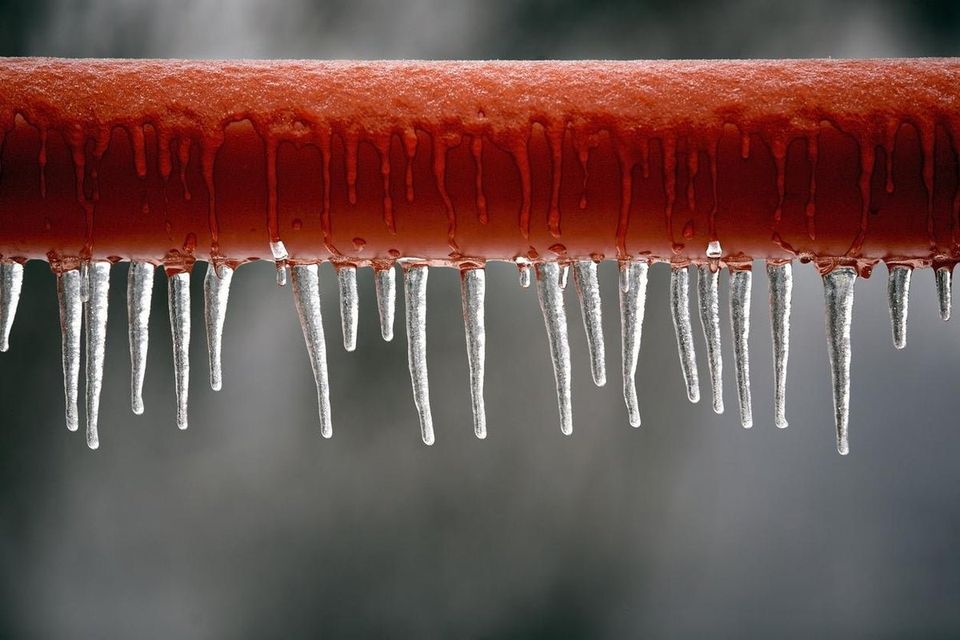Protecting Against Frozen Pipes in Cold Weather: Essential Advice
Protecting Against Frozen Pipes in Cold Weather: Essential Advice
Blog Article
Here down the page you can get a good deal of worthwhile insight relating to How to Prevent Your Pipes From Freezing.

Cold weather can damage your plumbing, especially by freezing pipes. Here's how to stop it from taking place and what to do if it does.
Intro
As temperatures drop, the risk of icy pipelines boosts, potentially bring about expensive repairs and water damage. Recognizing how to avoid icy pipes is critical for property owners in cool climates.
Recognizing Icy Pipes
What triggers pipelines to ice up?
Pipelines ice up when exposed to temperatures below 32 ° F (0 ° C) for prolonged periods. As water inside the pipes freezes, it broadens, putting pressure on the pipe walls and possibly causing them to rupture.
Dangers and damages
Frozen pipes can bring about water supply disturbances, home damage, and expensive repairs. Burst pipes can flood homes and trigger considerable architectural damages.
Indications of Frozen Piping
Determining icy pipes early can avoid them from rupturing.
Exactly how to recognize icy pipelines
Seek lowered water circulation from taps, uncommon odors or sounds from pipes, and visible frost on revealed pipes.
Prevention Tips
Protecting vulnerable pipes
Cover pipelines in insulation sleeves or use warm tape to shield them from freezing temperature levels. Focus on pipes in unheated or outside locations of the home.
Home heating methods
Maintain indoor rooms effectively warmed, particularly areas with pipes. Open up closet doors to permit warm air to distribute around pipelines under sinks.
Protecting Outside Pipes
Yard hoses and outdoor taps
Disconnect and drain garden hoses prior to winter season. Set up frost-proof faucets or cover exterior taps with shielded caps.
What to Do If Your Pipelines Freeze
Immediate actions to take
If you believe frozen pipelines, keep taps open to relieve stress as the ice thaws. Use a hairdryer or towels taken in warm water to thaw pipes gradually.
Long-Term Solutions
Architectural adjustments
Think about rerouting pipelines far from outside walls or unheated areas. Add additional insulation to attic rooms, cellars, and crawl spaces.
Updating insulation
Buy top quality insulation for pipes, attics, and walls. Appropriate insulation assists preserve constant temperatures and decreases the risk of frozen pipelines.
Verdict
Protecting against icy pipes requires proactive actions and fast reactions. By understanding the reasons, indications, and preventive measures, homeowners can secure their plumbing throughout cold weather.
5 Ways to Prevent Frozen Pipes
Drain Outdoor Faucets and Disconnect Hoses
First, close the shut-off valve that controls the flow of water in the pipe to your outdoor faucet. Then, head outside to disconnect and drain your hose and open the outdoor faucet to allow the water to completely drain out of the line. Turn off the faucet when done. Finally, head back to the shut-off valve and drain the remaining water inside the pipe into a bucket or container. Additionally, if you have a home irrigation system, you should consider hiring an expert to clear the system of water each year.
Insulate Pipes
One of the best and most cost-effective methods for preventing frozen water pipes is to wrap your pipes with insulation. This is especially important for areas in your home that aren’t exposed to heat, such as an attic. We suggest using foam sleeves, which can typically be found at your local hardware store.
Keep Heat Running at 65
Your pipes are located inside your walls, and the temperature there is much colder than the rest of the house. To prevent your pipes from freezing, The Insurance Information Institute suggests that you keep your home heated to at least 65 degrees, even when traveling. You may want to invest in smart devices that can keep an eye on the temperature in your home while you’re away.
Leave Water Dripping
Moving water — even a small trickle — can prevent ice from forming inside your pipes. When freezing temps are imminent, start a drip of water from all faucets that serve exposed pipes. Leaving a few faucets running will also help relieve pressure inside the pipes and help prevent a rupture if the water inside freezes.
Open Cupboard Doors
Warm your kitchen and bathroom pipes by opening cupboards and vanities. You should also leave your interior doors ajar to help warm air circulate evenly throughout your home.

I was made aware of that editorial about 6 Ways to Prevent Frozen Pipes through a buddy on our other web blog. Those who enjoyed our article if you please consider to pass it around. Many thanks for your time. Please check up our blog back soon.
View Website Report this page